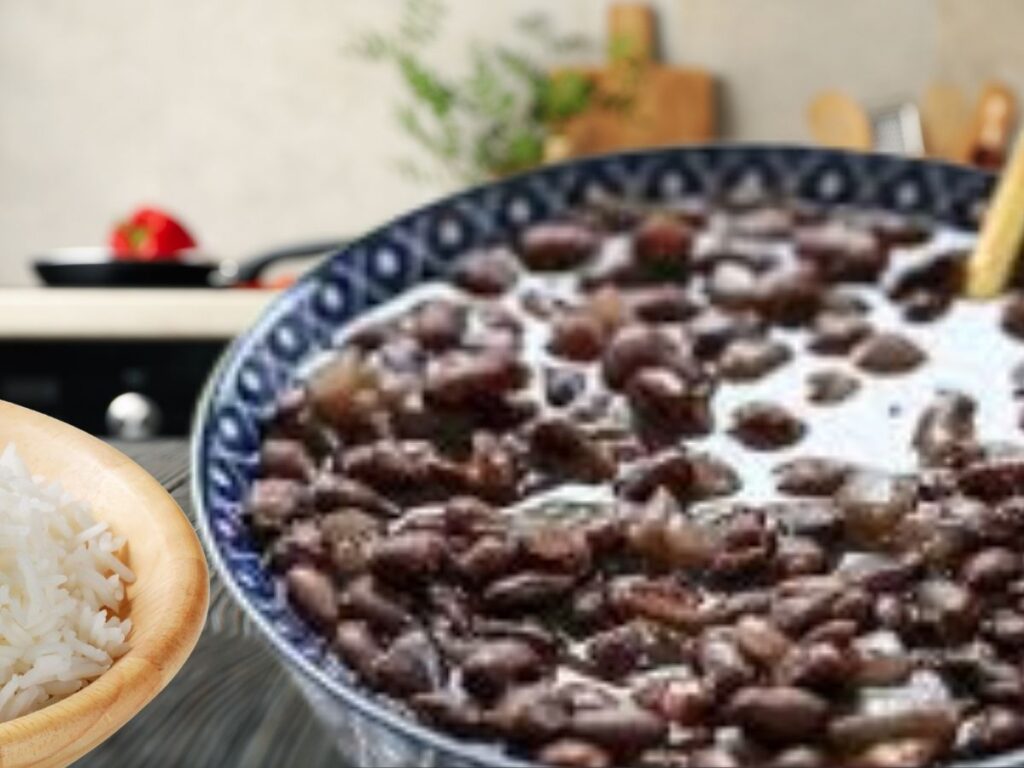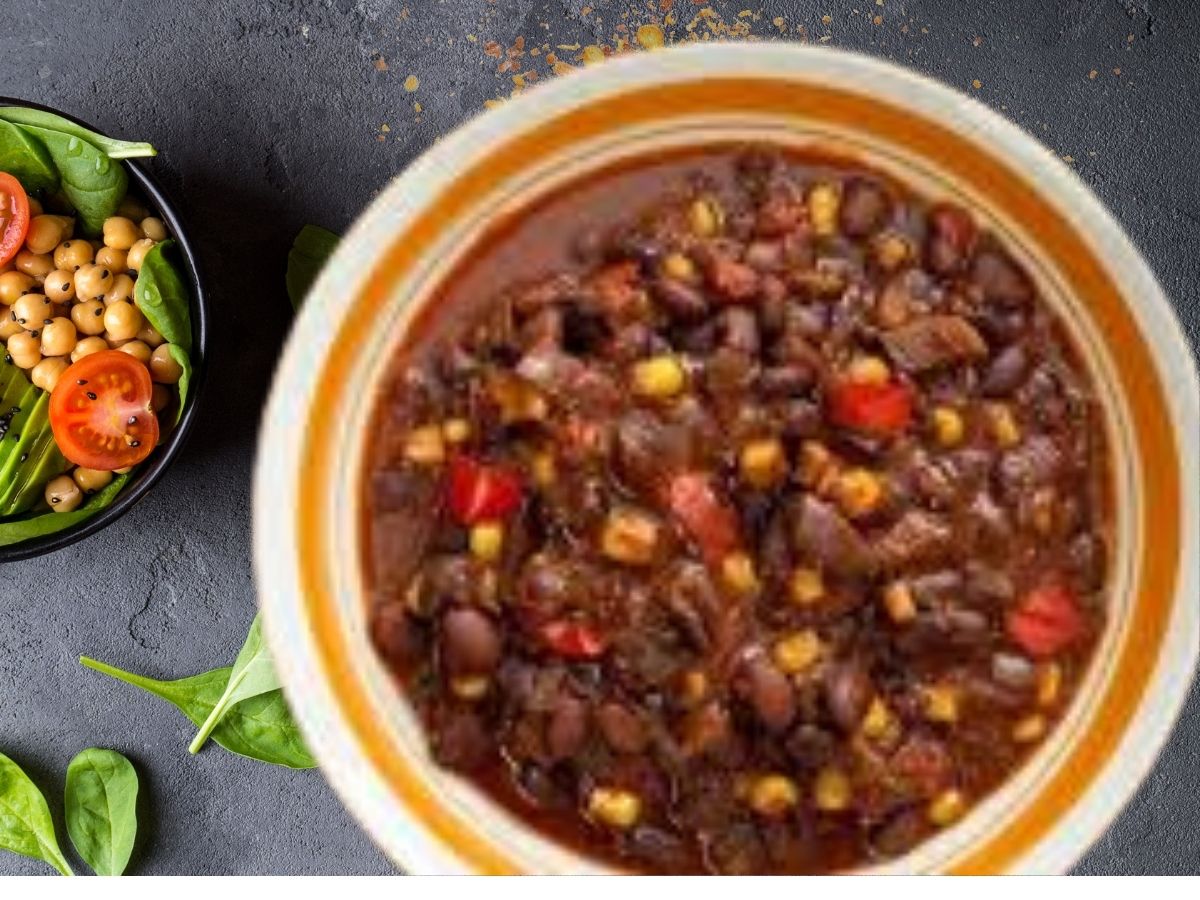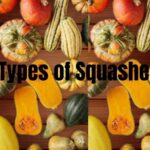Black beans are a kitchen staple that deserves a permanent place in your regular meal rotation. Whether you’re building a burrito bowl, creating a hearty soup, making a side dish for Latin-inspired meals, or simply looking for an affordable, nutritious protein source, black beans deliver exceptional value, flavour, and versatility. Yet many home cooks remain uncertain about the proper cooking process soaking versus not soaking, exact timing, how to know when they’re perfectly done, and which cooking method works best for their situation.
The beautiful thing about black beans is their forgiving nature once you understand the basics. Unlike some dried legumes that require precise timing and attention, black beans are relatively straightforward to cook well. They transform from hard, inedible pellets into creamy, tender beans through straightforward methods available in every kitchen. From the traditional stovetop method that’s been used for generations to modern pressure cookers that slash cooking time dramatically, to convenient options like rice cookers and microwaves, you have multiple paths to perfect beans.
This comprehensive guide covers every method for cooking black beans, from dried to canned, with exact timing for each approach. You’ll discover how to shortcut the traditional soaking process, learn what perfectly cooked beans look like, and understand the differences between cooking methods so you can choose what works best for your schedule. Whether you’re meal-prepping a huge batch or quickly preparing dinner on a busy weeknight, this guide ensures consistent, delicious results every single time.
Recipe Overview
| Prep Time | 5-10 min |
| Soaking Time | 4-8 hours (optional) |
| Cook Time | 45-60 min (stovetop) |
| Total Time | 50-70 min (with quick soak method) |
| Yield | 6-8 servings |
| Difficulty Level | Easy |
| Cuisine | Universal/Latin |
Cuisine:
This simple and basic black bean recipe focuses on the stovetop method, the most commonly used and most reliable approach for cooking dried black beans. The recipe includes both traditional overnight soaking and the modern quick-soak method that saves hours. Once you master stovetop cooking, all the alternative methods become simple variations on the same principles. The beauty of black beans is that they’re nearly impossible to ruin if you follow basic guidelines they need time and heat.
The entire process, including quick-soaking and cooking, takes about an hour total, making it practical even for weeknight dinners. Once cooked, black beans keep beautifully in the refrigerator for nearly a week and freeze for months, making them perfect for meal prep.
How Long to Cook Black Beans: Complete Timing Guide
The cooking time depends significantly on the method and whether the beans were soaked. Here’s your complete reference:
Stovetop Cooking (Most Common Method)
Dried Beans Without Soaking (Quick Boil Method):
- Bring to a boil, boil for 2 minutes
- Drain, rinse well
- Add fresh water, bring to a boil
- Simmer 45-60 minutes until tender
- Total: 50-65 minutes
Dried Beans With Overnight Soak:
- Soak 8 hours or overnight
- Drain and rinse
- Add fresh water
- Bring to a boil, then simmer 30-45 minutes
- Total: 8 hours + 45 minutes (mostly passive)
Dried Beans With Quick Soak:
- Add beans to the pot with water
- Bring to a boil for 2 minutes
- Remove from heat, let soak 1 hour
- Drain, rinse, add fresh water
- Simmer 30-45 minutes
- Total: 2-2.5 hours (mostly passive)
Pressure Cooker (Fastest Method)
Dried Beans Without Soaking:
- Quick-soak method (as above): 10 minutes
- High pressure: 12-15 minutes
- Natural release: 10 minutes
- Total: 35-40 minutes
Dried Beans With Overnight Soak:
- Soaked beans
- High pressure: 8-10 minutes
- Natural release: 10 minutes
- Total: 18-20 minutes cooking + release
Instant Pot Method:
- High pressure: 20 minutes (from frozen/no soak)
- Manual release for 10 minutes, then natural release
- Total: 30-35 minutes
Rice Cooker Method
Dried Beans (Overnight Soaked):
- Soaked beans
- Add to the rice cooker
- Cook on regular cycle
- Total: 45-60 minutes
Dried Beans (No Soak):
- Requires multiple cycles
- First cycle: 30-40 minutes
- Check tenderness, repeat if needed
- Total: 60-90 minutes, depending on the cooker
Microwave Method
Dried Beans (Quick Soaked):
- Quick-soak as described above
- Microwave on high: 45-50 minutes
- Stir every 15 minutes
- Check tenderness, add time if needed
- Total: 50-60 minutes active microwaving
Canned Beans:
- Drain and rinse
- Place in a microwave-safe bowl
- Microwave on high: 3-4 minutes
- Stir once halfway through
- Total: 5-10 minutes
Canned Black Beans (Quickest Option)
From Can (Ready to Eat):
- Drain and rinse well
- Already cooked, use cold or heat
- Heat on stovetop: 3-5 minutes
- Heat in microwave: 2-3 minutes
- Total: 5 minutes
Slow Cooker Method
Dried Beans (Overnight Soaked):
- Soaked beans in a slow cooker
- Add water and salt
- Cook on low: 8 hours
- Cook on high: 4-5 hours
- Total: 4-8 hours
Dried Beans (No Soak):
- Raw beans in a slow cooker
- Add water (3 times the bean volume)
- Cook on low: 10-12 hours
- Cook on high: 6-8 hours
- Total: 6-12 hours
Can You Boil Black Beans Without Soaking?
Absolutely yes! Soaking is optional, not mandatory. Many modern cooks skip soaking entirely, using the quick-boil method:
Quick-Boil Method (No Soaking Required)
Process:
- Add dried beans to the pot
- Cover with cold water (about 3 times the bean volume)
- Bring to a rolling boil
- Boil for exactly 2 minutes
- Remove from heat
- Let’s sit covered for 1 hour
- Drain and discard water
- Add fresh water
- Bring to a boil, then simmer until tender (30-45 minutes)
Why This Works:
- Hot water cooking accomplishes what overnight soaking does
- Breaks down enzyme inhibitors
- Makes beans easier to digest
- Reduces cooking gases
- The total time is often similar to the soaking method
Benefits of Skipping Traditional Soaking
Advantages:
- No overnight planning required
- Faster overall (can cook any time)
- Uses the quick-soak method instead
- Beans retain more nutrients (less nutrient leaching)
- Spontaneous meal preparation becomes possible
Trade-offs:
- Quick-soak still requires 1-2 hours of active water time
- Slightly more active attention needed
- Gas-reduction benefit is less pronounced than overnight soaking
Drawback of No Soaking At All
Some people skip all soaking and soak steps. This is possible but takes considerably longer:
- Cooking time extends to 1-1.5 hours instead of 45-60 minutes
- Digestibility may be slightly affected
- Takes the same total time as quick-soak, so why skip the soak?
Verdict: Always use at least the quick-boil soak method. It takes minimal extra time and provides genuine benefits.
Can You Cook Beans in 30 Minutes?
Not from dried beans at least not reliably. Here’s what’s realistic:
Can You Cook Beans in 30 Minutes?
From Dried (Starting to Finish):
- 30 minutes: Not possible without a pressure cooker
- A pressure cooker could do it, but it requires already-soaked beans
- Realistic minimum: 45 minutes (quick-soak + cook)
- Standard: 60-90 minutes for fully cooked
From Canned:
- 30 minutes: Yes, easily!
- 5 minutes: Already cooked, use as-is
- 10 minutes: Warm through on the stovetop
- 30 minutes: Plenty of time for multiple applications
The 30-Minute Reality
What You Can Do in 30 Minutes:
- Cook canned beans
- Prepare toppings and components
- Sauté vegetables
- Make sauce
- Create a burrito bowl
- Prepare a bean-based dish
What You Cannot Do in 30 Minutes:
- Cook dried beans from start to finish (without a pressure cooker)
- Soak and cook overnight-soaked beans
Solution for Busy Days:
- Keep canned black beans stocked
- Quick-soak beans on the weekend for weeknight cooking
- Pre-cook a large batch and freeze portions
- Use a pressure cooker with pre-soaked beans
How to Know if Black Beans Are Fully Cooked
Perfectly cooked black beans have distinctive characteristics:
Visual Indicators
Completely Cooked Beans:
- Tender enough to break easily with a fork
- Creamy interior texture
- Skin barely holds together but doesn’t fall apart
- No hard centre when you bite (this indicates undercooked)
- Uniform soft texture throughout
- Dark colour, possibly slightly wrinkled skin
Undercooked Beans:
- Very hard centre if you bite or press
- Skin may be intact, but the interior is chalky
- Takes significant effort to break with a fork
- Pale or lighter colour inside
- Gritty texture
Overcooked Beans (Rare):
- Beans are starting to break apart
- Very mushy texture
- Skins separating from beans
- Liquid is becoming thick and starchy
- Beans almost disintegrating
Firmness Test
- Remove one bean from the cooking liquid
- Let cool slightly (hot beans feel softer)
- Press between your thumb and finger
- Should crush easily but maintain shape
- Interior should be creamy throughout
Taste Test
- Should taste creamy and slightly nutty
- No chalky or floury texture
- Easy to chew
- Tender all the way through
- No taste of raw bean
Color Change
Black beans start very black and hard. As they cook:
- Hours 0-30: Black, very hard
- Hours 30-45: Black, softening
- Hour 45+: Black, creamy inside
- Fully cooked: Black throughout but creamy
Ingredients
Basic Black Beans Recipe
For Cooking Dried Beans:
- 1 pound dried black beans (about 2 cups)
- 6-8 cups water
- 1 teaspoon salt (add after beans are mostly tender)
- Optional: 1 onion, quartered
- Optional: 4 cloves of garlic, smashed
- Optional: 1 bay leaf
- Optional: 1 teaspoon cumin
For Seasoning (After Cooking):
- 2 tablespoons olive oil
- 1 onion, diced
- 3 cloves garlic, minced
- 1 teaspoon cumin
- ½ teaspoon chilli powder
- 1 tablespoon cilantro, chopped
- Salt and pepper to taste
- Optional: lime juice
Why These Ingredients Matter
Water:
- Essential for cooking
- Use 3-4 times the bean volume
- Replace during cooking if the level drops too much
Salt:
- Add after beans are mostly cooked (prevents hardening)
- Enhances flavor
- ½-1 teaspoon per pound of beans
Aromatics (Onion, Garlic, Bay Leaf):
- Add subtle flavour during cooking
- Optional but recommended
- Infuse beans with depth
Finishing Seasonings:
- Transform plain cooked beans into a flavorful dish
- Sauté garlic and onion for complexity
- Fresh cilantro adds brightness
- Lime juice adds acidity
Step-by-Step Method: How to Cook Black Beans on the Stove
Phase 1: Preparation and Quick Soaking
- Measure and Inspect: Pour 1 pound dried black beans into a bowl. Pick through them, removing any stones, debris, or discoloured beans. This takes just a minute but prevents unpleasant surprises.
- Rinse Thoroughly: Place beans in a strainer and rinse under cold running water, stirring with your hand. Rinse until the water runs relatively clear. This removes dust and excess starch.
- Add to Pot: Place rinsed beans in a large pot. Cover with approximately 3 times their volume of cold water (about 6-8 cups).
- Bring to a boil: Place the pot over high heat. Bring to a rolling boil. Let boil for exactly 2 minutes. This hot-water bath accomplishes the same protein breakdown and enzyme reduction as overnight soaking.
- Quick Soak: Remove from heat and cover pot with a lid. Let it sit undisturbed for 1 hour. This soaking time is mostly passive you can do other things while this happens.
- Drain and Rinse: After soaking, drain the beans in a strainer and rinse thoroughly under cold water. Discard the soaking liquid this helps reduce gas-causing compounds.
Phase 2: Cooking
- Fresh Water: Return drained beans to the pot. Add 6-8 cups of fresh, cold water. Fresh water cooks cleaner beans and further removes compounds that cause digestive issues.
- Optional Aromatics: If desired, add 1 onion quartered, 4 smashed garlic cloves, and 1 bay leaf. These infuse a subtle flavour but are completely optional.
- Bring to a Boil Again: Place over high heat and bring to a boil. Once boiling, reduce the heat to medium-low to achieve a gentle simmer.
- Simmer Gently: Let beans simmer uncovered, stirring occasionally. The liquid should bubble slowly and gently, not boil aggressively. Aggressive boiling can break beans apart.
- Watch the Level: Black beans need to stay covered by liquid throughout cooking. If the water drops below bean level by more than an inch, add hot water (cold water stops the cooking process). Check every 15-20 minutes.
- Add Salt: After about 30 minutes of cooking, when beans are starting to soften, add 1 teaspoon salt. Salt toughens beans if added too early, but at this point, beans will absorb it and become seasoned throughout.
Phase 3: Checking Doneness
- Start Testing at 40 Minutes: After 40 minutes of simmering, start testing for doneness. Remove one bean, let cool slightly, then press between thumb and finger. It should crush easily.
- Continue Cooking if Needed: If beans are still very firm (chalky in the centre), continue cooking. Check every 5 minutes. Cooking time ranges from 30-60 minutes total, depending on bean age and size.
- Target Texture: Beans should be tender enough to crush easily, with a creamy interior, but not falling apart or mushy.
Phase 4: Finishing and Using
- Drain if Desired: If you prefer less liquid, drain beans in a strainer. Reserve cooking liquid it’s flavorful and useful for soups and stews.
- Season for Flavour: While beans are hot, sauté 1 diced onion and 3 minced garlic cloves in 2 tablespoons oil until fragrant. Add 1 teaspoon of cumin and ½ teaspoon of chilli powder. Add beans, stir well. Add salt and pepper to taste. This transforms plain beans into a flavorful dish.
- Add Brightness: Finish with fresh cilantro and a squeeze of lime juice for brightness.
- Serve or Store: Serve immediately over rice, in soups, or use for any recipe. Or cool completely and refrigerate.

How Long to Cook Black Beans Pressure Cooker
The fastest method by far:
Instant Pot / Pressure Cooker Method
With Quick Soak (Fastest):
- Quick-soak beans as described earlier (1 hour)
- Drain and add to the pressure cooker with fresh water
- High pressure: 12 minutes
- Natural release: 10 minutes (don’t quick-release)
- Total: 1 hour soak + 22 minutes pressure cooking = 1.5 hours
From Frozen (No Soak):
- Add dried beans directly to the pressure cooker
- Add water to fill ½ pot
- High pressure: 20 minutes
- Natural release: 10-15 minutes
- Total: 30-35 minutes
From Overnight Soak:
- Pre-soaked beans
- Add to the pressure cooker
- High pressure: 8-10 minutes (soaked beans cook faster)
- Natural release: 10 minutes
- Total: 18-20 minutes
Why Natural Release Matters
- Never quick-release pressure cooker beans
- Quick-release causes an explosive eruption of bean foam
- Natural release allows beans to finish cooking gently
- Results in more intact beans
- Much cleaner (less mess)
Pressure Cooker Tips
Water Level:
- Should be ½ inch above beans minimum
- Don’t fill more than ½ pot
- Too much water = mushy beans
- Too little water = burnt beans
Venting:
- Always use the sealing valve position
- Check the steam vent is clear
- Never force open under pressure
Results:
- Pressure cooker beans cook 20-30% faster than stovetop
- More uniform tenderness
- Beans tend to be slightly softer
- Energy-efficient
How Long to Cook Black Beans in a Rice Cooker
Convenient one-pot method:
Rice Cooker Black Beans
With Overnight Soak:
- Pre-soaked beans
- Add to the rice cooker
- Add water (use rice cooker water line, or 3:1 water-to-beans)
- Add salt and optional aromatics
- Press the cook button
- Typically: 45-60 minutes
- Let’s sit 10 minutes after done cycle completes
From Dried (No Soak):
- Add dried beans to the rice cooker
- Add water to cover by 2 inches
- Cook on regular cycle
- When the cycle is complete, the beans may not be done
- Press the cook button again for an additional 20-30 minutes
- May require 2-3 cycles total
Advantages:
- Hands-off cooking
- No monitoring needed
- Doesn’t heat up the kitchen much
- Keeps beans warm after cooking
Disadvantages:
- Less control over the liquid level
- Takes longer than a stovetop or a pressure cooker
- Smaller batches than a large pot
- Can’t easily check progress mid-cook
How Long to Cook Black Beans in the Microwave
Possible but not ideal:
Microwave Cooking Method
Quick-Soaked Beans:
- Quick-soak beans (as described earlier)
- Drain and place in a large microwave-safe bowl
- Cover with water 2 inches above the beans
- Microwave on high power for 10 minutes
- Stir well
- Microwave on high power for 10 minutes
- Stir again
- Continue microwaving in 10-minute intervals, stirring between
- Total: 45-60 minutes, checking for doneness each interval
- Total time: 50-65 minutes
Why Microwaves Aren’t Ideal
- Requires frequent stirring (15+ times)
- Heats the kitchen considerably
- Hard to prevent boiling over
- Less energy-efficient than a stovetop
- Takes a comparable time to other methods
When Microwave Makes Sense
- Small batch needed
- The stovetop is full
- Want to keep the heat off the kitchen
- Cooking vessel in use elsewhere
How Long to Cook Canned Black Beans on the Stove
Simple reheating method:
Stovetop Reheating
Basic Method:
- Drain and rinse canned beans
- Place in a saucepan over medium heat
- Add 2-3 tablespoons of water or broth
- Stir occasionally
- Heat 5-8 minutes until steaming
- Season as desired
- Total: 10 minutes
With Flavour Building:
- Heat 2 tablespoons of oil in a saucepan over medium heat
- Sauté 1 diced onion until soft (5 minutes)
- Add 3 minced garlic cloves, cook 1 minute
- Add drained canned beans
- Add ¼ cup broth
- Add cumin, chilli powder, and cilantro
- Simmer 5-10 minutes for flavours to combine
- Season with salt, pepper, and lime juice
- Total: 20 minutes
Why This Transforms Canned Beans:
- Plain canned beans taste metallic and bland
- Sautéing vegetables builds a flavour foundation
- Spices add depth and warmth
- Lime and cilantro add brightness
- The results taste homemade despite using canned
Serving Suggestions and Storage Guide
Perfect Accompaniments
Grain Pairings:
- Cilantro lime rice
- Brown rice
- Quinoa pilaf
- Black rice
- Spanish rice
Protein Combinations:
- Serve with grilled chicken
- Pair with fish tacos
- Add to burrito bowls
- Top with grilled shrimp
- Alongside sausage
Vegetable Additions:
- Roasted bell peppers
- Sautéed spinach
- Corn (frozen or fresh)
- Diced tomatoes
- Sautéed onions
Complete Meal Ideas:
- Black beans + rice + roasted vegetables + salsa
- Black beans + quinoa + corn + lime dressing
- Black beans in tacos with toppings
- Black bean soup with lime crema
- Burrito bowls with beans as a base
Storage Guidelines
Refrigeration:
- Cooked beans: 4-5 days in a sealed container
- With cooking liquid: 5-7 days (liquid preserves beans)
- Store in a glass or plastic container: An Airtight container is essential
- Cool completely within 2 hours before storing
Freezing:
- Cooked beans: Up to 6 months
- In cooking liquid: Freezes beautifully
- Portion into portions: Use ice cube trays or small containers
- Label with date: Important for food safety tracking
Thawing:
- Overnight in refrigerator (best method)
- In the microwave defrost setting
- In a saucepan over low heat
- In an Instant Pot with a sauté function
Reheating:
- Stovetop with a splash of liquid (best texture)
- Microwave 2-3 minutes, stirred halfway
- Instant pot on low pressure for 5 minutes
- Slow cooker on low for 1-2 hours
Leftover Ideas:
- Black bean soup
- Burrito filling
- Taco filling
- Salad topping
- Bean dip (blended)
- Added to rice dishes
- In quesadillas
- On nachos
Temperature and Storage Guidelines
Cooking Temperatures:
- Stovetop: Medium to medium-low heat (gentle simmer)
- Never aggressively boil (breaks beans)
- Pressure cooker: High pressure only
- Keep heated at 140°F+ for food safety
Storage Temperatures:
- Refrigerate at 40°F or below
- Freeze at 0°F or below
- Bring to room temperature within 2 hours of cooking
- Reheat to 165°F internal temperature
Storage Containers:
- Glass containers are best (can see contents, lasts longest)
- Plastic containers are acceptable (up to 5 days)
- Remove from the can immediately (metal can affect taste)
- Use within dates recommended
Nutritional Information
Per serving (1 cup cooked black beans):
| Calories | 227 kcal |
| Total Carbohydrates | 41g |
| Sugars | 1g |
| Dietary Fibre | 10g |
| Protein | 15g |
| Fat | 1g |
| Cholesterol | 0mg |
| Sodium | 420mg (with salt added during cooking) |
Nutritional Benefits:
- Excellent plant-based protein
- High in fibre (supports digestive health)
- Rich in iron (important for vegetarians)
- Low in fat naturally
- Excellent source of folate (supports cell division)
- Contains antioxidants
Canned vs. Dried:
- Nutritionally very similar after cooking
- Canned slightly softer texture
- Dried saves money
- Canned saves time
- Both equally nutritious
Health Considerations:
- Legumes are a staple of the Mediterranean diet
- Associated with reduced disease risk
- Good for blood sugar control
- Help support a healthy weight
- Excellent for plant-based diets
Frequently Asked Questions
How long do black beans need to be cooked?
Black beans need approximately 45-60 minutes of cooking time on the stovetop after they’ve been soaked (either overnight or using the quick-boil method). If cooking unsoaked beans using just the boiling method without soaking, add the initial 2-minute boil time, making the total cooking time around 60-90 minutes. Pressure cooker reduces this to 12-20 minutes under pressure plus natural release time. The exact time depends on bean age (older beans take longer), size variation, and your cooking temperature. Always verify doneness by testing texture rather than relying on time alone.
Can you boil black beans without soaking?
Yes, absolutely. You can cook black beans without any soaking using the quick-boil method: boil beans for 2 minutes, then remove from heat and let sit for 1 hour (this accomplishes what overnight soaking does), then drain, add fresh water, and simmer 45-60 minutes. Alternatively, you can skip all soaking and simmer raw dried beans for 60-90 minutes, though this results in longer total cooking time and slightly reduced digestibility. The quick-soak method is ideal because it combines speed with the digestive benefits of soaking. Many cooks find this modern approach easier than overnight soaking.
Can you cook beans in 30 minutes?
From dried beans, no, not reliably. The minimum realistic time is 45-50 minutes (quick-soak plus cooking). Pressure cookers can achieve 20-35 minutes under pressure, but this still requires water to come to pressure first and includes the soak time. However, canned beans are completely cooked and ready to eat in 5 minutes of heating time, so if you’re in a genuine 30-minute pinch, canned beans are the answer. For better planning, quick-soak beans on weekends for weeknight cooking, or use your pressure cooker for faster weeknight legume preparation.
How to know if black beans are fully cooked?
The most reliable test is the firmness test: remove one cooked bean, let it cool slightly, then press between your thumb and finger it should crush easily with slight pressure, feeling creamy inside. If the bean is hard or chalky in the centre, it’s undercooked; if it completely falls apart, it’s overcooked. Visually, fully cooked beans should be dark black with a slightly wrinkled skin that’s tender but intact. You should be able to easily break beans in half with a fork or bite, with no hard centre portion. The cooking liquid should become slightly thick and starchy but not gelatinous. Taste a bean it should taste nutty and creamy with no chalky or raw flavour.
Do black beans need to soak?
Technically, no beans will eventually cook without soaking. However, soaking (either overnight or using the quick-soak method) offers significant advantages: reduces cooking time by 30-50%, improves digestibility by reducing gas-causing compounds, makes beans cook more uniformly, and supposedly improves flavour. Most cooks find the soaking step worthwhile. The quick-soak method takes only 1 hour total versus overnight, making it practical even for spontaneous cooking. If you never soak, beans still cook take considerably longer and have less pleasant digestibility benefits.
What happens if you don’t soak beans?
If you skip soaking entirely (not even the quick-soak), beans will still cook, but take 60-90 minutes instead of 45-60 minutes. They may not cook as uniformly. They produce more gas if eaten, potentially causing digestive discomfort. Nutritionally, they’re fine, but the longer cooking time can break beans apart more easily, resulting in a mushier texture. The quick-soak method takes only 1 hour of passive time and provides genuine benefits, making it the sensible middle ground between long overnight soaking and no soaking at all.
Can you cook black beans in the oven?
Yes, though it’s not common. Place soaked beans in an oven-safe pot with fresh water, cover, and bake at 325°F for 1-2 hours until tender. The oven method works well for batch cooking and keeps your stovetop free. However, it’s less efficient than stovetop cooking because you have to preheat the oven, and it heats your kitchen more. Use oven cooking when your stovetop is full or when batch cooking for meal prep. Pressure cookers remain faster and more energy-efficient for most situations.
Why do black beans float when cooking?
Black beans (and other beans) float during cooking because water enters them and they become less dense than the cooking liquid. As beans cook, water penetrates the dried bean, making it expand and become less dense. This is normal and doesn’t indicate a problem. Floating beans are usually perfectly cooked and tender. Conversely, beans that remain sunken at the bottom often indicate they’re still undercooked. Once you see beans floating, they’re probably done or very close this is actually a helpful visual cue that cooking is progressing well.
Conclusion
Cooking black beans from scratch is easier than you think once you understand the basics. Whether you choose the quick-soak method on the stovetop, use a pressure cooker for speed, or grab canned beans when life gets busy, you now know exactly how long everything takes and how to get perfect results.
Keep dried black beans in your pantry for quick, affordable meals. Try the quick-soak method when you have a bit of time, use your pressure cooker for busy days, or reach for canned when you need everything in five minutes. Black beans work in so many dishes rice bowls, soups, tacos, salads that they’ll become a regular part of your cooking. Start with one of the methods that fits your schedule best, practice a couple of times, and you’ll be cooking black beans like a pro before you know it.









